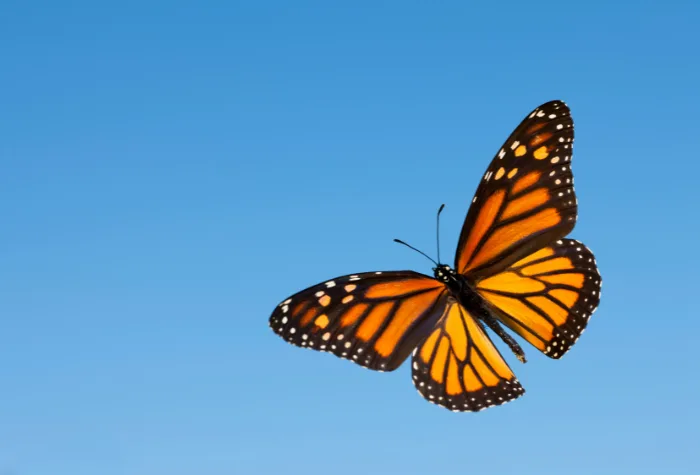
Increasing number of monarchs infected with 'debilitating' parasite
Planting native milkweed can help support monarchs.
A new analysis drawing on 50 years of data suggests up to 10 per cent of wild monarchs are plagued by Ophryocystis elektrosirrha (O.E.), a debilitating parasite that often proves fatal.
The paper, produced by Emory University researchers, appears in the Journal of Animal Ecology.
Infection prevalence appears to be increasing. In 1968, scientists detected O.E. in less than 1 per cent of monarchs.
"We're seeing a significant change in a wildlife population with a parasitism rate steadily rising from almost non-existent to as high as 10 percent," Ania Majewska, first author of the paper and a post-doctoral fellow in Emory's Department of Biology, said in a statement.
"It's a signal that something is not right in the environment and that we need to pay attention."
O.E. is a parasite that infects the gut of monarch caterpillars. If caterpillars with a severe infection reach the adult phase, monarchs will ooze bodily fluids, often resulting in death. Monarchs with lighter infections that survive will likely experience a shortened lifespan.
"Our findings suggest that tens of millions of eastern monarch butterflies are getting sick and dying each year from these parasites," Jaap de Roode, Emory professor of biology and senior author of the study, said.
"If the infection rates keep going up, fewer and fewer monarchs will be able to survive to migrate to their overwintering sites."
VIDEO: VISITING MONARCHS AT MAINLAND CANADA'S SOUTHERNMOST TIP
MORE MILKWEED
Researchers believe the rise in O.E. infections could be due to habitat loss, resulting in an increased density in places where monarchs lay their eggs.
Milkweed is the only thing monarch caterpillars eat. If fewer plants are available, females must lay their eggs closer together.
"One thing that the COVID-19 pandemic taught us is that social distancing can help reduce the spread of an infectious disease," de Roode says.
"The same holds true for monarchs and the O.E. parasite."
People raising several monarchs in confined spaces may also play a role in increased infections.
THE ROLE OF CARDENOLIDES
Monarchs lay their eggs in spring and only on milkweed. Caterpillars feed on the plants, some of which contain a high level of a steroid called cardenolides. A 2012 study by de Roode found that monarchs used the steroid as a sort of drug. It does not cure O.E. infections, but the study suggests it can lessen the severity. Lab tests found that O.E.-infected female monarchs prefer to lay their eggs on milkweed that contains cardenolides, while non-infected females showed no preference.
RETHINKING CONSERVATION
About 20 years ago, conservationists planted exotic milkweed species to compensate for milkweed decline - a strategy that may have done more harm than good, the researchers say.
Exotic milkweed tends to contain higher levels of cardenolides, Majewska said. Infected females may be seeking out these plants, contributing to the density problem.
"Ultimately, a continuing rise in the monarch's parasitic infection rate could cause the species to suffer significantly," Majewska said.
"If tens of millions of them are dying annually from parasitic infections, then an extreme weather event during the winter in Mexico might reduce the population to a level that could be dangerous for their genetic diversity."
SUPPORTING MONARCHS
In parts of Canada, milkweed has declined by as much as 86 per cent compared to 75 years ago.
Helping the monarch population can be as simple as planting one of the many native milkweed species somewhere on your property.
You can take that a step further by setting up a monarch waystation and registering it online with monarchwatch.com.
Thumbnail image courtesy: Canva Pro.
